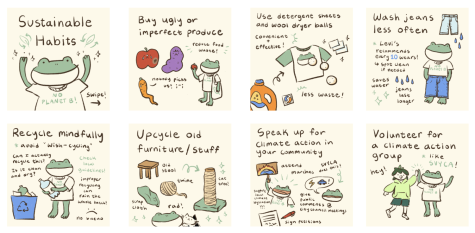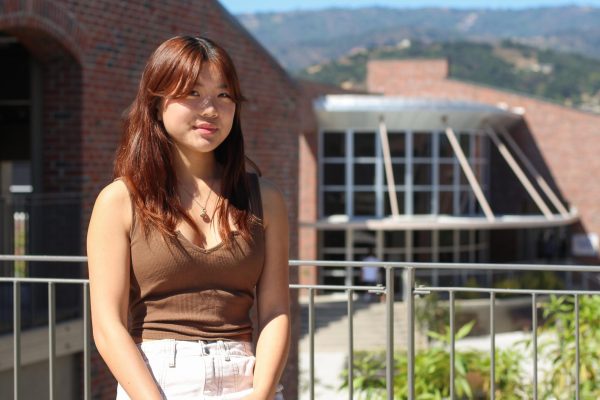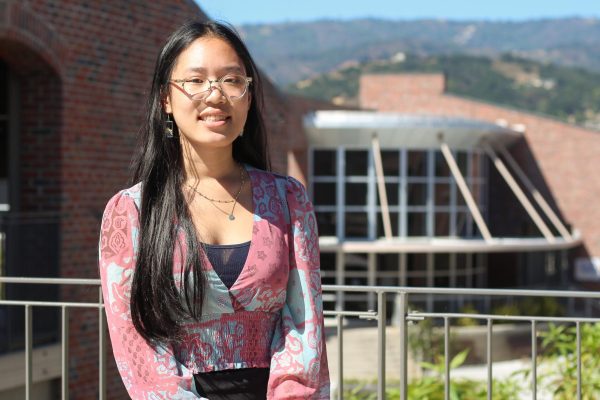Artivism on social media
Discussing the unique impacts of combining art, activism, and the widespread use of social media
February 3, 2023
College freshman and MVHS alum Chloe Kwon, currently studying at UC Santa Barbara, grew up loving nature and animals. She often studied animals as a kid, and her growing knowledge of climate change and its effects translated into her artwork for Silicon Valley Youth Climate Action. Throughout high school, she designed infographics and animations to post on SVYCA’s social media, combining her artistic skills with her interest in climate change.
“It’s a lot of just balancing what I want and am comfortable doing with the interests of the organization as a whole,” Kwon said.
Similarly, sophomore Aster Nguyen designs graphics and posts for the Wildfire Awareness Initiative. However, he finds that he “[hasn’t] really seen it make any impact.” His process involves choosing templates, compiling elements and color palettes that he likes, adding text in pictures and sending the graphic in for edits. Nguyen says that whether or not his content makes an impact isn’t important to him because he finds the most enjoyment through making art for himself rather than WAI.
“I do this content because a friend asked me to,” Nguyen said. “Of course, [the cause] is important, but it’s not something I’m passionate about.” Additionally, he mentions that “[I hope] people are more aware of wildfire dangers but [I’m] not really invested in the mission/point of what I help make.”
However, sophomore Kanchan Kaushik says the content is effective in terms of its reach and impact. She also finds this content easily accessible due to the constant flow of information from her and others’ social media feeds.
She specifically follows activism accounts on Instagram, such as @mattxiv, which shares about LGBTQ rights and social issues, and @middleeastmatters, which shares about current social and political issues in the Middle East. Kaushik mentions she has even seen these topics reach and be shared by celebrities, citing Emma Watson and Ariana Grande as examples. Despite this, Kaushik notes that some people reposting these posts may be due to performative activism.
“A lot of people [repost posts], and the next [story] will be a funny story or something,” Kaushik said. “And it’s kind of like, do you really care?”
On the other hand, she notes that people could still care about an issue and just post something else after, but “some people will just [think] everyone I know is [posting about it] so I’m also gonna post [about] it.”
Kwon agrees that using the Internet can have its downsides, but ultimately, the ability to spread information so widely can be extremely beneficial for raising awareness.
“When it comes to creating social change, there’s strength in numbers,” Kwon said. “Of course, this can be a double-edged sword, but the capacity for good is still very much there.”
In addition, Kwon says graphics and artwork are far more engaging than typical forms of information, such as articles or data. She finds that “people are attracted to creativity and originality” and engage the audience better than simple text.

Kwon remembers being able to use her stickers for making upcycled crafts at a booth at Cupertino’s Earth and Arbor Day last year. She noticed that her artwork helped open up the conversation to the topics she cared about.
“My most popular sticker was of a melting polar bear-shaped ice cream cone,” Kwon said. “It was cutesy on the surface but got people talking about its darker meaning.”
However, Kaushik notes that it is difficult for people to have many conversations in person because of the focus on sharing using social media. She notes that, at a personal level, not much action is taken.
“I feel like any media that’s spread around becomes a topic that people talk about online, but don’t ever bring up in person,” Kaushik said. “The topic stays where it is spread [online rather than spreading offline].”
Still, Kwon emphasizes that the pros outweigh the cons when it comes to learning from online activism. Kwon attributes this to the overall impact of online activism and spreading awareness of issues through the internet.
“Art can help bring more emotion and empathy into topics as well, which gets people personally invested and more willing to contribute,” Kwon said. “Visual art can also be more accessible because it can cross language barriers.”


















